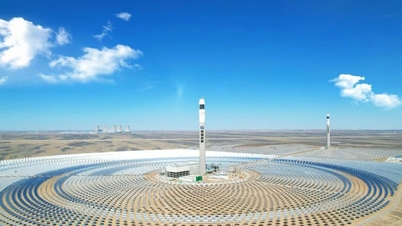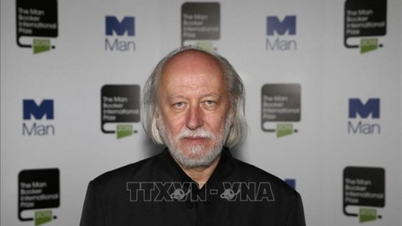A team of Chinese scientists has traced the ancestors of animals and plants back to a hydrogen-metabolizing cell that existed before the Great Oxidation Event (GOE) – a pivotal period that occurred at least 2.1 billion years ago and led to the formation of Earth's oxygen-rich atmosphere, according to the SCMP.
Research shows that the last common ancestor of eukaryotes existed about 2.72 billion years ago in oxygen-deprived conditions.
Eukaryotes are cells or organisms that have a membrane-bound nucleus. They are the basis of complex multicellular life that includes all animals, plants, and fungi, as well as many unicellular organisms.
“The origin of eukaryotic cells has long remained a mystery,” a team from East China Normal University and Shenzhen University wrote in a paper published in the prestigious scientific journal Nature earlier this month.
The team's findings support the hydrogen hypothesis of the origin of eukaryotes, challenging previous findings about the genealogy of this common ancestor.
Because eukaryotic evolution enabled the development of complex life on Earth, understanding the origin of this cell could provide further insights into the evolution of life.
This could also have important implications for the search for life in outer space – by shedding light on the conditions and processes that might allow complex life to emerge elsewhere in the universe.
Oxygen Disaster
About 2.4 billion years ago, Earth entered the Great Oxidation Event (also known as the Oxygen Catastrophe), in which the atmosphere and shallow seas at that time saw their first increase in free oxygen concentrations.
This period lasted about 300 million years and is thought to have been caused by photosynthetic cyanobacteria, resulting in the extinction of many organisms that did not require oxygen to grow.
The accumulation of oxygen in the atmosphere is thought to have facilitated the diversification of eukaryotes. However, molecular time estimates for the last common ancestor of eukaryotes are determined to predate this event.
There are two main hypotheses about the grouping of life on Earth. The first is the three-domain theory, which divides organisms into bacteria, archaea, and eukaryotes.
Archaea are single-celled organisms that are similar in size and structure to bacteria but have a different molecular structure.
Recent research supports the two-domain theory, which suggests that archaea and eukaryotes form one group, with eukaryotes originating from archaea.
A decade ago, researchers discovered a group called Asgard archaea, which have since been considered the closest living relatives of eukaryotes, although there is still debate about the exact place of eukaryotes within this group.
By studying more than 200 new Asgard archaeal genomes sampled from coastal wetlands in China alongside existing genomes, the researchers were able to position the eukaryotes within the Asgard archaeal clade as a sister clade to Heimdallarchaeia, where a clade is a group of organisms that includes a common ancestor and all of its descendants, whether living or extinct.
Hydrogen Hypothesis
The idea that eukaryotes may have originated from the fusion of a hydrogen-dependent archaeal host with a hydrogen-producing bacterium is known as the “hydrogen hypothesis.”
Chinese research has supported the hydrogen hypothesis, with metabolic evidence suggesting that early eukaryotic evolution was driven by a partnership between a host and a bacterium that lived in oxygen-deprived conditions.
"The presence of extremely oxygen-sensitive enzymes... coupled with the oxygen-free deep ocean environment at the time, suggests that this ancestor must have evolved under anaerobic conditions," the team wrote.
According to an announcement by East China Normal University, this discovery shows that the origin of eukaryotic cells can be traced back to about 2.72 billion years ago.
“Our findings refine existing knowledge and fill some gaps in the early evolutionary stages of eukaryotes,” the team concludes.
This discovery is expected to bring valuable insights into life on Earth and in space./.
Source: https://www.vietnamplus.vn/nghien-cuu-trung-quoc-chung-minh-to-tien-con-nguoi-song-nho-hydro-thay-vi-oxy-post1039944.vnp


![[Photo] Prime Minister Pham Minh Chinh chairs a meeting of the Government Standing Committee on overcoming the consequences of natural disasters after storm No. 11](https://vphoto.vietnam.vn/thumb/1200x675/vietnam/resource/IMAGE/2025/10/09/1759997894015_dsc-0591-jpg.webp)

![[Photo] President Luong Cuong attends the 80th Anniversary of the Traditional Day of Vietnamese Lawyers](https://vphoto.vietnam.vn/thumb/1200x675/vietnam/resource/IMAGE/2025/10/09/1760026998213_ndo_br_1-jpg.webp)


![[Photo] General Secretary To Lam visits Kieng Sang Kindergarten and the classroom named after Uncle Ho](https://vphoto.vietnam.vn/thumb/1200x675/vietnam/resource/IMAGE/2025/10/09/1760023999336_vna-potal-tong-bi-thu-to-lam-tham-truong-mau-giao-kieng-sang-va-lop-hoc-mang-ten-bac-ho-8328675-277-jpg.webp)























































































Comment (0)